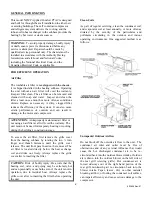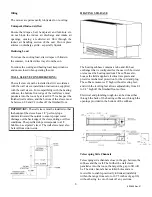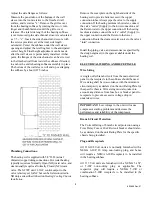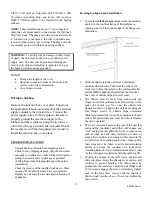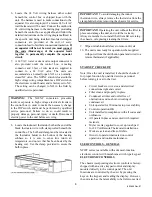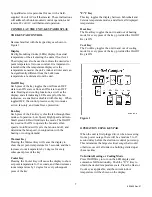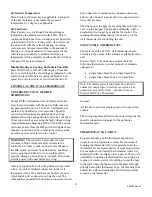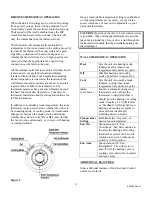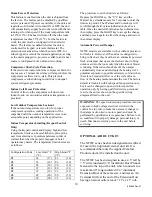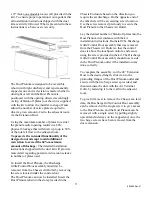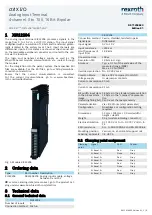
8
803809 Rev. 01
Set Desired Temperature
Press Cooler or Warmer key as applicable. Each push
of the key increases or decreases the set point
temperature by 1 degree, as applicable.
Set Fan Mode
Press Fan key to cycle through the fan settings as
indicated by the small green circular LEDs. Select
continuous High Speed fan, continuous Low Speed fan,
or Intermittent Fan by selecting Auto. Auto cycles the
fan on and off with the calls for heating or cooling.
Auto also sets fan speed according to the amount of
heating or cooling demanded. In Auto mode, the fan
will start up periodically to establish airflow; air
temperature will be sampled, and then the fan will shut
off again if there is no demand.
Disable Heating or Cooling, but Initiate Fan-Only
Press On/Off key to turn off LED display. Press Fan
key to cycle through the fan settings as indicated by the
small circular LEDs. Select continuous High or Low
speed. Do not select Auto, as it will turn the fan off.
CONTROL AT THE WALL THERMOSTAT
CONVERSION TO 24V REMOTE
THERMOSTAT
Except for the wall thermostat and thermostat cable,
everything is included with the unit to field convert a
keypad-operated unit to 24 Volt AC wall thermostat
operation by qualified service personnel. Specific
conversion instructions are detailed on the wiring
diagram affixed to each particular unit to be converted.
Conversion involves accessing the high voltage wiring
compartment and changing a DIP switch setting on the
electronic board. Once the DIP switch setting has been
changed, operation will be in remote thermostat mode
as soon as power is restored to the control.
WARNING:
The conversion procedure involves
exposure to high voltage electrical circuits in the
control box in order to make the necessary change to
the DIP switch, and must be performed by qualified
service personnel. Failure to do so could result in
property damage, personal injury or death. Disconnect
electric power to the unit before servicing.
A factory-supplied 24 Volt wiring harness is provided
with every unit to facilitate connection to the wall
thermostat wiring. One end has a multi-pin connector
which mates with a connector exiting the unit. The
other end has preinstalled butt splice connectors, which
play a dual role in insulating any unused connectors,
and can also be used to make the wire connections for
wires that are used.
The final step is to apply the masking label provided, to
cover up the keypad. The keypad and display will be
disabled and no longer be available for control. The
masking label markings instruct the user to go to the
wall thermostat for controlling the unit.
COMPATIBLE THERMOSTATS
The features of the 24 VAC wall thermostat chosen
will dictate the extent of the features available from the
unit.
Electric Heat / Cool units can accommodate the
following thermostats in either manual or automatic
changeover:
Single Stage Heat/Cool, Single Speed Fan
Single Stage Heat/Cool, Two Speed Fan
Note: The thermostat selection must be verified to
ensure its control logic will always energize a Fan
output (G) on a call for heat – also known as an
Electric Heat Type Thermostat.
General:
All the above can have single speed or two speed fan
control.
The wiring diagrams affixed to the units will guide the
specific connection strategies for the particular
thermostats used.
THERMOSTAT LOCATION:
Proper functioning of the thermostat depends on
accurate room temperature sensing. Be conscious of
locating the thermostat where temperatures near the
thermostat are not representative of room temperature.
For example, do not install the thermostat where it is
subjected to direct sunlight, other sources of heat, or to
cold drafts, including air discharged from a supply air
register. A common error is forgetting to seal the hole
in the wall where the thermostat cable passes through,
directly behind the thermostat body. Air bleeding from
behind the wall can drastically affect the temperature
sensed by the thermostat.


